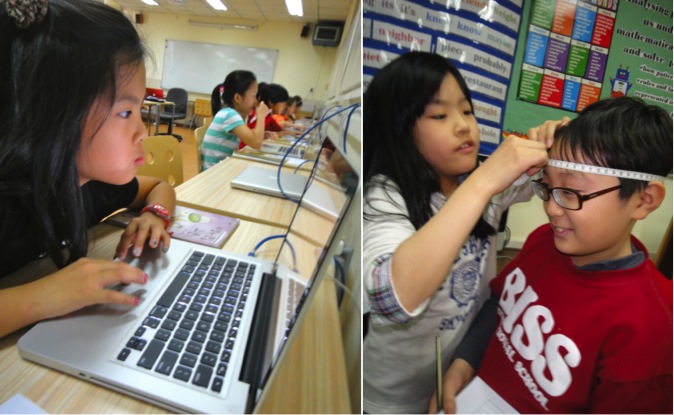In this exciting world of concept-driven, student-empowered, inquiry-based learning, educators have many forms of assessment at our disposal.
Standardised results, especially one-off, normed, percentile scores, are extremely difficult for teachers to interpret, when what we really seek is authentic data on the knowledge, skills, attitudes and deep understandings of each child.
In contrast to our daily classroom inquiries, standardised tests often take the form of contrived, decontextualised, multiple-choice questions, quizzing students on facts and skills in isolation. And yet, for many valid reasons, international schools often seek standardised data on our students’ academic performance.
As I observe students taking these tests, I find it difficult not to jump in with, “What makes you think that?”, “Why do you think this question is on the test?” or “Could you re-write this question to include more than one variable?” Teachers do not very good proctors make!
And yet, it is possible to strengthen pedagogy if we take a considered approach to data collection, analysis and dissemination. Here are my tips for making the most of standardised assessment in international schools:
Not All Tests Are Created Equal
Adaptive Testing
Ensure that your school utilises only adaptive tests, which are individualised for each child. As students answer questions, these tests are tailored in real-time to the needs of the learner. Each child answers questions just at their level. This ensures that students feel capable and challenged throughout. Also, the results are more likely to be indicative of ability, rather than persistence.
Non-timed
Ensure that your test is not timed, so children can work at their own pace. This gives students with reading difficulties and other learning differences greater opportunity to achieve.
Don’t Just Sit There: Watch & Listen
Record questions
Document all questions asked by students during the test. When an ESOL student asks, “What does likelihood mean?”, I know questions on probability are invalid for this child. Given an oral or visual prompt, he may well understand this mathematical concept; however, it will not be demonstrated in this test. Another student asks, “Can I put 8/16 here?” The real-life answer is “yes”, and I see instantly that this child understands equivalent fractions. Unfortunately, this is not an open-ended task and there is only one correct drag-&-drop answer (4/8). She will be marked down.
Observe test-taking behaviour
If your students spend their days communicating, collaborating, constructing meaning and applying understanding, they will certainly find multiple choice tests bizarre. Watch carefully for students who are off-task, dreaming, racing, panicking, clicking randomly or over-analysing tasks.
Record all this information and provide it to teachers with the results. This will empower teachers to disregard some scores and increase the validity of the data.
Use the results for good, not evil!
Mentors should work with busy teachers to unpack and analyse the data, so it can be used to inform instruction, not to compare students or evaluate teachers.
Focus on Progress & Differentiation
Use data to monitor growth and progress across multiple school years. Help teachers identify individual improvements and celebrate these during 3-way conferences. Use the data to identify areas of need and to strengthen differentiation practices. Assist teachers to group students (flexibly!) according to readiness, identify outliers who need individualised programs, look for underachievers (who produce surprising test results), and above all, to tailor their lessons to the needs of their cohort. Once the data is analysed, put the numbers away and help teachers set simple, measurable goals for their classroom practice.
Use Sparingly
Standardised data should be but a small puzzle piece in the grand scheme of assessment. It should be analysed alongside teacher observations, student work samples, open-ended tasks, self-assessments (the list goes on…) to build an accurate picture of each child’s learning. If standardised data does not correlate with authentic assessment data, it must be disregarded as anomalous.
Educate Parents
Talk to parents. Many will be nervous about testing and may encourage their child to study or cram. Many will see this as a wonderful opportunity to find out “how my kid compares to other 5th graders”. Explain (multiple times – in writing & in person) the many ways teachers assess learning and how standardised data will be used to inform instruction. Only distribute standardised results during conferences, where it can be explained clearly, alongside a portfolio of authentic assessment.
With this approach, standardised data can be used discerningly rather than destructively. With careful analysis, standardised data can inform teachers and improve instructional practices in international schools.

Standardised vs Authentic



